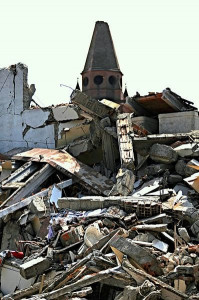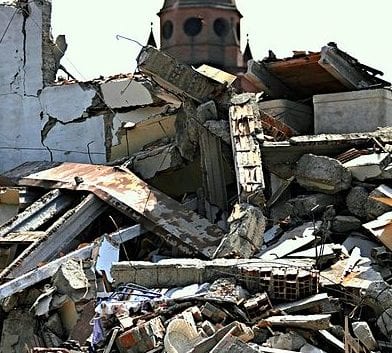
As the death toll continues to rise in the aftermath of the earthquake that devastated a swathe of central Italy early on Wednesday, Matteo Renzi, the Italian Prime Minister, thanked rescue workers for their efforts in recovering dozens of people from the rubble.
“At moments of trouble, Italy knows how to cope. No family, no city, no hamlet will be left alone,” he said. By Wednesday evening the death toll had risen to at almost 250 people. The 6.2 magnitude quake sent residents fleeing their homes and running into the streets. A family of four were also trapped under the rubble and showing no signs of life.
The Wednesday morning earthquake is the latest in a string of deadly seismic events to strike Italy in the past four decades. The Mediterranean nation is particularly prone to earthquakes for a mix of geographical reasons, Jennifer Weston, a seismologist with the International Seismological Centre in England, told Mashable.
Italy and its neighbouring countries sit at the spot where the Eurasia and Africa (or Nubia) tectonic plates collide. “They’re just pushing up against each other all the time,” Weston said in a phone interview.
The boot-shaped nation also sits west of the Tyrrhenian basin, a sedimentary basin in the Mediterranean Sea that is an opening. To Italy’s east, the Adria microplate is slipping beneath Eurasia and the Apennines Mountains. “All this movement leads to energy being stored up in the crust, and eventually that’s going to be released,” Weston said. “Earthquakes are just this releasing of energy that’s been built up.”
Italy’s earthquakes are particularly devastating for another reason: topography. In mountainous areas like Norcia – the epicentre of Wednesday’s earthquake – communities are built along steep slopes. Shaking from earthquakes can cause landslides, sending homes and construction tumbling into valleys, resulting in higher damages and death tolls compared with flatter parts of the world, Weston said.
In April 2009, a 6.3-magnitude earthquake near the town of L’Aquila, about 30 miles south of Wednesday’s event, killed nearly 300 people, injured more than 1,000 others and left at least 55,000 people homeless. The region’s largest earthquake recorded by scientific instruments – and its deadliest – was a 6.7-magnitude earthquake in 1915. The event killed around 32,000 people in and around the city of Avezzano.
This time, one of the villages with a few hundred residents, Pescara del Tronto, appears to have been wiped from the map, according to early images.
To learn about Monaco’s earthquake risks, see Public Services.
